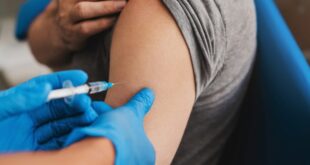RIP Trigg Kiser. Credit: Instagram @emiliekiser
Trigg Kiser, three years old, was tragically drowned in the backyard pool of Emilie Kiser and her family on May 12th, Arizona.
Trigg was found unconscious by emergency responders and transported to Chandler Regional Hospital. He was then transferred to Phoenix Children’s Hospital, where he is in a critical condition. Trigg passed away tragically on Sunday, 18 May.
Trigg’s death was confirmed by the Chandler Police Department, who stated: “Our thoughts and deepest condolences are with the child’s family and loved ones during this unimaginable time… The investigation remains open and is ongoing… out of respect for the family’s privacy, we will not be releasing additional details until the investigation is closed.” (Cited by ABC News.)
Emilie Kiser is known for her lifestyle and family content. She has more than 1.4 million Instagram fans and 3.3 millions on TikTok. Her husband and she welcomed a baby boy Theodore just seven weeks prior to the tragic loss of Trigg. Trigg would have celebrated his fourth birthday on July 14.
What is the importance of water safety? How to protect your children from open water
According to the American Academy of Pediatrics, drowning is the number one cause of death among children aged between 1 and 4 years old in the United States. CDC. According to RCH Kids Health.
- Keep young children within reach when they are near open water.
- Do not rely on older children or lifeguards to keep an eye on them.
- While supervising, avoid all distractions.
‘Practice constant active supervision – this means focusing your full attention on your child and always keeping your eyes on them’, says RCH Kids Health.
- Protect your pool or spa with childproof barriers.
- After use, empty buckets, inflatable pools, and baths.
CPR in an emergency drowning situation
Act quickly if you pull a child from the water who isn’t breathing properly.
Steps for CPR with children (Read the complete instructions here) St John Ambulance)
- Call emergency services, and then give five rescue breaths.
- Next, 30 chest compressions followed by two additional rescue breaths.
- Continue to use the 30:2 ratio, until either help arrives or your child responds.
If one is available, use it.
Be aware of ‘dry drowning’ and ‘secondary drowning’
These rare but deadly complications can occur after a child has left the water.
- Dry drowning – water never reaches lungs. Instead, it causes airway contractions.
- Water enters lungs and builds up fluid.
Your child may have difficulty breathing immediately, but it could get worse in the next 24 to 48 hours. WebMD.
Watch out for:
- Cough
- Chest pain
- Unusual tiredness and irritability
- Problem breathing
Seek urgent medical care.
Tragic accidents such as the death of Trigg Kiser are unfortunately not isolated. Drownings are fast and silent but can be prevented. It’s a reminder that summer is fast approaching.
 Costa News Spain Breaking News | English News in Spain.
Costa News Spain Breaking News | English News in Spain.





